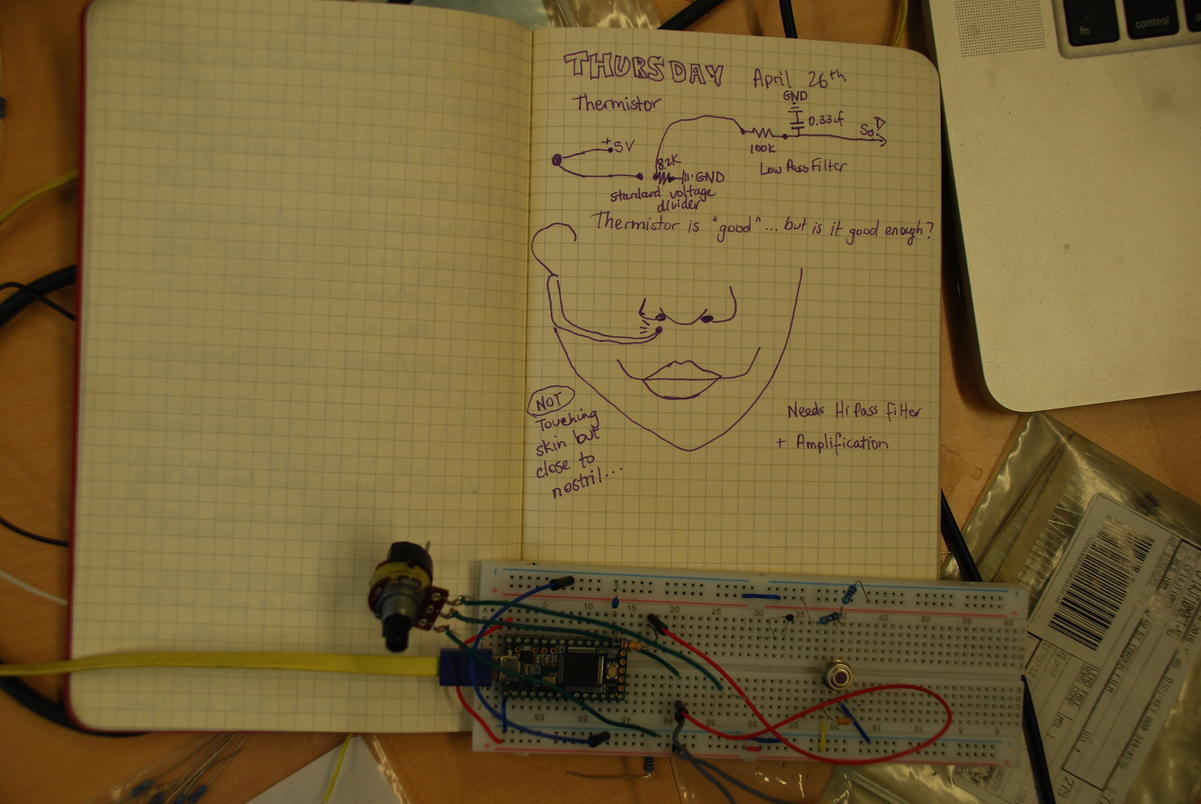Skin conductance
Skin conductance (SC) is an index of sympathetic nervous system (SNS) activation and emotional arousal. To measure skin conductance, a small electrical potential is applied between two electrodes strapped or taped to the palmar side of the hand, and the amount of current conducted between the electrodes is measured. Although the exact physiological mechanism is not completely understood, it is generally accepted that SC varies directly with the amount of sweat secreted by the skin and indirectly with the number of sweat glands that are activated by the SNS. Biofeedback applications of SC generally involve reducing stress levels and training adaptability. SC is also useful for evaluating the effectiveness of relaxation practices. As the amount of stress increases, so does the skin conductance level. Relaxation decreases SC. Because it is highly sensitive to instantaneous emotional changes, SC is frequently used to reflect such reactions as anger, fear, or sexual feelings and to measure the startle response (response to a visual or auditory stimulus).
{function: contextual, keywords: [skin, sensor, electronics, BioSynth]}
Respiration
Prototyping a respiration sensor using a thermistor placed just below the nostril. The thermistor is a type of resistor whose resistance is dependent on temperature. If placed close to nostril, the temperature differences caused by breathing can be used to calculate several respiration features.
{kind: caption, keywords: [respiration, sensor, electronics, BioSynth]}
BioSynth Sensors
Erin describes her installation "Pinch and Soothe", part of the "Thresholds Of The Algorithmic" exhibition at LydGalleriet, Bergen, Noway, June 8-15 2018.
The installation is based on the BioSynth, an embedded device designed by Erin to audify physiological data. The BioSynth core is a Teensy microcontroller, connected to:
- a temperature sensor - detecting exhalation / inhalation
- a blood flow sensor - measuring heart rate
- a skin conductance sensor - to spot changes in arousal levels
{function: contextual, date: 180615, place: lydgalleriet}
Heart rate
The heart rate sensor is based on a technology called photoplethysmography, which is often integrated in common smart watches, sport or fitness tools. Blood is red because it reflects red light and absorbs green light. This sensor uses green LED lights paired with light‑sensitive photodiodes to detect the amount of blood flowing through your skin at any given moment. When your heart beats, the blood flow in your wrist - and the green light absorption - is greater. Between beats, it’s less.
{function: contextual, keywords: [heart rate sensor, sensor, electronics, BioSynth]}
Biosynth
The "Pinch and Soothe" BioSynth evolved out of a previous version of the device, that Erin used in her piece Song of Seven: BioChoir, and in BioSolo, an improvisation for breath/voice and sonified heart and sweat release. This previous version of the BioSynth was composed of a Teensy board, an optical blood flow sensor and a sweat sensor, all packed in a plastic box with buttons to control different synthesis parameters.
{function: contextual, keywords: [BioSynth, sensor, electronics]}



